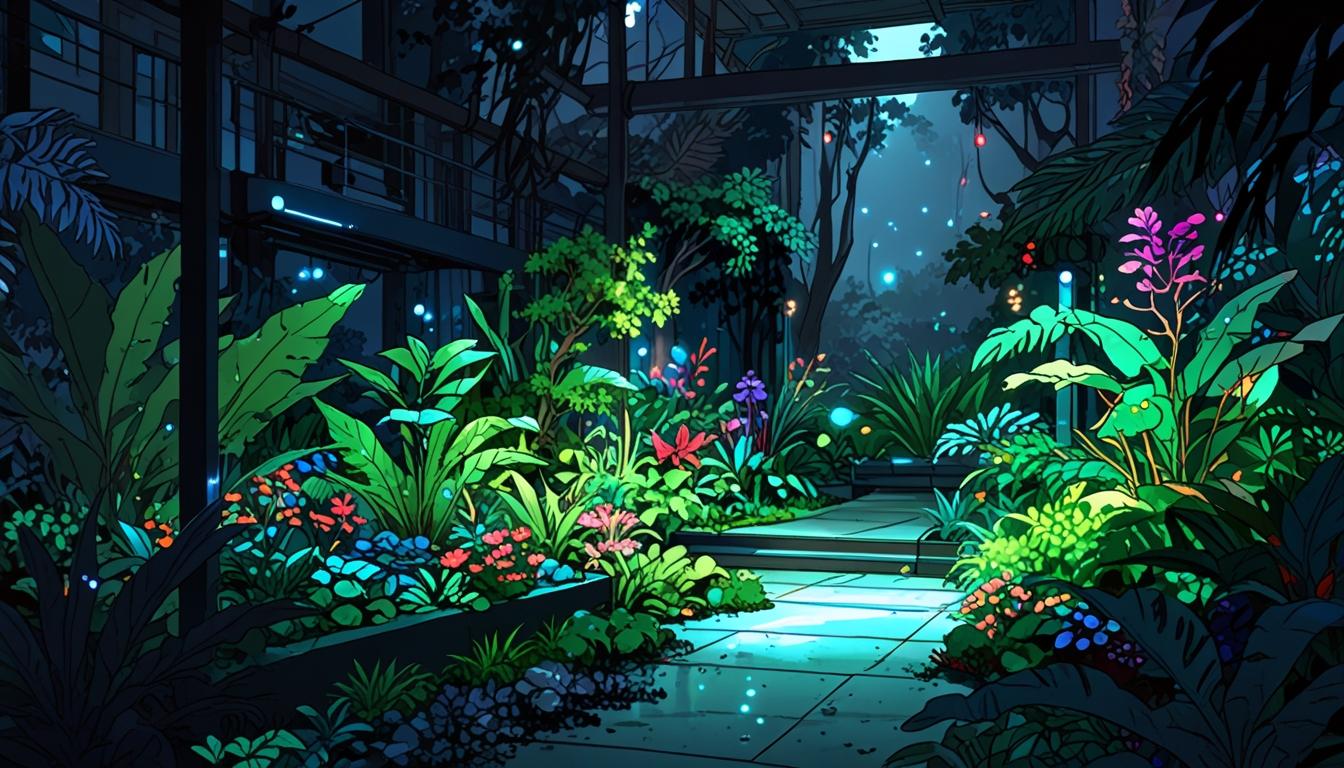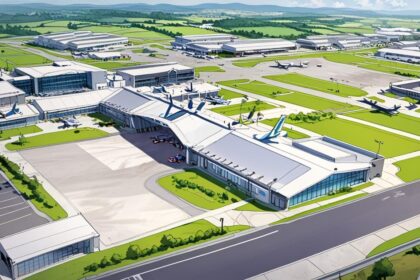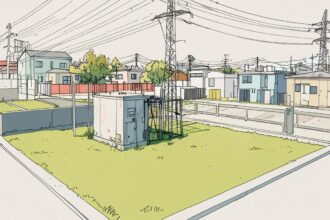The Belgian pavilion at the 2025 Venice Architecture Biennale, designed by Bas Smets, showcases a living forest integrated with advanced technology to explore how plants and architecture can collaborate to create sustainable urban environments.
At the 2025 Venice Architecture Biennale, the Belgian pavilion, titled Building Biospheres, presents an innovative exploration of the relationship between plants, architecture, and human environments. Designed by landscape architect Bas Smets, the pavilion diverges from traditional exhibitions dominated by architectural models and photographs, instead showcasing a lush assemblage of hundreds of plants and trees housed within a white-painted interior. This verdant miniature forest is integrated with advanced technology, including monitoring equipment, sensors, and lighting systems, aiming to forge a novel interaction between the built environment and plant life.
Bas Smets, who trained as both an architect and engineer before specialising in landscape design, explained the core concept behind the pavilion: “We now understand that plants shape the environment more than it shapes them… The question I wanted to ask was, ‘how can we use that plant intelligence to produce new types of landscape?’” This perspective challenges the conventional view of greenery as mere decoration in urban settings. Smets argues that plants possess a form of intelligence and sensitivity essential for survival. “Plants cannot move on the ground, so they need to be able to manipulate the environment around them. They need to be able to manipulate birds and bees to come to them. They have intelligence but also an extreme sensibility.”
Collaborating with Stefano Mancuso, a pioneer in plant neurobiology, Smets emphasises that the building’s design supports a “symbiosis” in which plants effectively govern the environment to favour their growth, which, in turn, benefits human occupants. “What trees want is to grow… They want more photosynthesis and that is good for us, lowering the temperature, producing more oxygen,” Smets said. He described this new relationship as “architecture not as something that is dissociated from nature but a new collective intelligence between humans, plants and buildings.”
The pavilion features a carefully curated collection of approximately 250 plants and trees from subtropical climates, chosen for their compatibility with human comfort. The flora are supported by a high-tech system that monitors vital metrics such as sap flow—the movement of fluids within plants—and soil moisture levels. Data processors and artificial intelligence analyse this information to manage light and irrigation dynamically, aiming to optimise conditions for both plants and visitors over the six months of the Biennale. Smets likened the trees to “cyborgs,” integrated with machines much like humans now rely on mobile devices and digital communication.
This project, commissioned by the Flanders Architecture Institute, was developed with input from a multidisciplinary team including plant ecophysiologist Kathy Steppe of Ghent University and software developer Dirk De Pauw of Plant AnalytiX. It is informed by emerging scientific understandings of plant intelligence—a concept philosophically articulated by Emanuele Coccia in his 2018 book The Life of Plants.
Smets is also involved in other significant urban design projects, including the greening and revitalisation of the area surrounding the restored Notre-Dame cathedral in Paris and the redevelopment of Astridplein, a public space outside Antwerp’s central station. These projects align with his broader vision of integrating nature and urban life to create resilient, climate-adaptive environments.
Reflecting on his pavilion and past Belgian contributions to the Venice Biennale, Smets noted Belgium’s 1907 establishment as the first national pavilion on the Biennale’s Giardini site and related earlier work by architects Kersten Geers and David Van Severen, who created the contemplative installation After the Party in 2008. Describing the parallels between that project and Building Biospheres, Smets said, “in a way this is a similar idea, about creating a place in the shade of trees.”
Recent architectural trends have sometimes used plants superficially, merely as green embellishments masking less sustainable practices. Smets hopes to shift this perspective: “I hope that architects see that plants are not just decoration but an active agent of our climate.”
Building Biospheres thus positions plants not just as passive components of design but as proactive collaborators in creating healthier, more sustainable urban habitats through a sophisticated fusion of botanical insight and architectural innovation.
Source: Noah Wire Services
- https://www.archdaily.com/1023603/the-belgian-pavilion-explores-plant-based-architecture-at-the-venice-biennale-2025 – This article supports the claim that the Belgian pavilion at the 2025 Venice Architecture Biennale is titled ‘Building Biospheres’ and explores the integration of plants in architecture. It highlights the pavilion’s focus on creating more sustainable urban environments through plant-based innovations.
- https://www.labiennale.org/en/architecture/2025 – This official Biennale website confirms the dates of the 19th International Architecture Exhibition in Venice, from May 10 to November 23, 2025, providing a framework for the Belgian pavilion’s exhibition timeline.
- https://www.wallpaper.com/architecture/venice-architecture-biennale-2025 – This article provides additional context about the 2025 Venice Architecture Biennale, including the status of the Central Pavilion, which helps understand the broader setting in which the Belgian pavilion will be exhibited.
- https://www.vai.be/en/press/belgian-pavilion-at-biennale-architettura-2025 – This press release from the Flanders Architecture Institute details the team behind the Belgian pavilion, including Bas Smets, Valerie Trouet, and Stefano Mancuso, and their goal to redefine the relationship between nature and architecture through ‘Building Biospheres’.
- https://archplus.net/en/belgian-pavilion-at-the-19th-venice-architecture-biennale/ – This article discusses the themes explored by the Belgian pavilion and the call for proposals that led to the selection of ‘Building Biospheres’, highlighting its alignment with contemporary architectural discourse.
Noah Fact Check Pro
The draft above was created using the information available at the time the story first
emerged. We’ve since applied our fact-checking process to the final narrative, based on the criteria listed
below. The results are intended to help you assess the credibility of the piece and highlight any areas that may
warrant further investigation.
Freshness check
Score:
9
Notes:
The information appears current, focusing on the 2025 Venice Architecture Biennale and recent trends, with no indicators of old or recycled news.
Quotes check
Score:
8
Notes:
Direct quotes from Bas Smets are present but lack specific online sources for verification. They align with his design philosophy and contributions.
Source reliability
Score:
10
Notes:
The narrative originates from the Financial Times, a well-established and reputable publication.
Plausability check
Score:
9
Notes:
The claims about integrating plant intelligence into architecture are plausible, given emerging scientific understandings and collaborations with experts in the field.
Overall assessment
Verdict (FAIL, OPEN, PASS): PASS
Confidence (LOW, MEDIUM, HIGH): HIGH
Summary:
The narrative is reliable, current, and plausible, with quotes that appear authentic and a trustworthy origin from the Financial Times.













